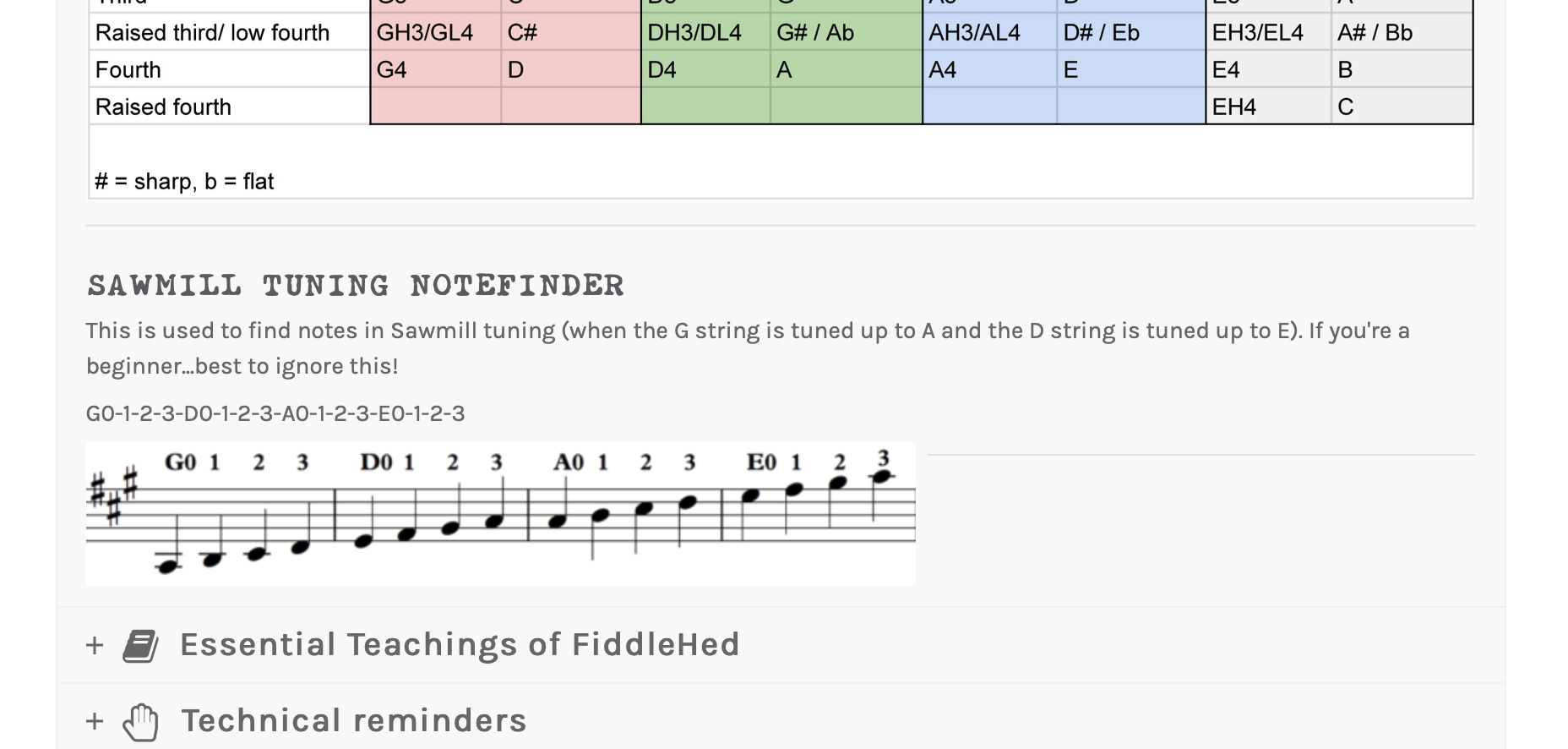How do you know the correct note in sawmill tuning?
A FiddleHed named Lizzy wrote in asking, “How do you know when you have the correct sound/note for sawmill tuning? I usually use a guitar tuner for tuning.”
Thanks for that question. You can still use your electronic tuner. All notes on the A and E strings are the same. In sawmill tuning, the G string is tuned up to A and the D string is tuned up to E.
Should a beginner learn sawmill tuning?
The short answer is no. I’d suggest you focus on getting a good sound in standard tuning. Learn at least twenty tunes and be able to play the G major scale in two octaves.
That said, if you are 1000% sure you want to only play old-time tunes, then you might want to try sawmill tuning sooner than later. It will actually make certain songs a bit easier.
In general, I like to teach people in a way that allows them to be flexible. So in addition to starting with standard tuning, I teach a classical hold for the fiddle and bow, instead of the old-time way of holding it off the neck and choking up on the bow. This way, you can always experiment with a different hold later, but you’ll also have the option to play other styles of music that would require the classical hold (like jazz, bluegrass and well, classical music).
Can’t I just use standard tuning for the same tunes?
You CAN use standard instead of sawmill tuning for any old-time tune. But it will require a different fingering on the G and D strings.
Blackest Crow A part first quarter in Sawmill tuning:
A2-1-2-1-0-D1-0-1-2
And in standard tuning:
A2-1-2-1-0-D2-1-2-H3
Which tuning is easier?
It might be physically easier to use sawmill tuning for certain parts. In the example above, you need to use raised third finger for the phrase played in standard tuning. This is can be physically challenging for a beginner.
On the other hand, playing in sawmill tuning can be mentally challenging if you’re used to standard tuning ? You have to re-train your fingers how to play on the G and D strings. But you can practice anything, including this.
I have a lesson coming soon on how to practice sawmill tuning. These exercises will help you to switch between tunings.
Why bother learning sawmill tuning?
If you are playing tunes exclusively in the key of A major, then you will notice a beautiful resonant sound with sawmill tuning. There is because there is more physical resonance happening. So if you play the open A string, the open G string (which is tuned to A) will also start vibrating.
Why does resonance happen? Unfortunately, I don’t understand it well enough to offer a good explanation. Basically, the frequency of waves on the A string is twice that of the G string (the lower octave of A). Because these waves are multiples of each other, they reinforce each other. And so playing one causes the other to ring.
See? Not that great of an explanation, but maybe a teeny bit helpful.
OK, then why bother with standard tuning?
The short answer is that standard tuning offers more flexibility. If you want to switch keys (scales) then this is the way to go.
Sawmill tuning is best for playing in A major, but f you want to play in Bb, it becomes more difficult than standard tuning.
Is sawmill music used in other types of music?
To my pretty limited knowledge, the only other style that uses sawmill tuning is Indian music (Carnatic and Hindustani). Which is so interesting! Who would have thought there would be a connection between the Blue Ridge mountains and the Ganges River??
Two years ago, I traveled to India and took some lessons with a great Indian violinist named Kala Ramnath. I learned that they put viola strings on the violin, and then tune it to DADA. If you think about it, it’s the same relative arrangement as AEAE, just a fifth lower.
Indian musicians usually play in one key for their whole life! So they don’t need the flexibility that standard tuning offers.
Further learning…
Cross-tuning The Fiddle: Sawmill (AEAE)
How to play better in tune with an electronic tuner
I also added sawmill tuning to the Notefinder in the Practice Toolkit (which you can see on all lesson pages).

Two ways I can help you level up your fiddling
- Sign up for the FiddleHed newsletter below.
- Sign up for the Free Two-week Trial. You’ll get full access to all courses and group lessons. Plus, I’ll send you some free lessons tailored to your current skill level.
Thanks for being here 🙏
